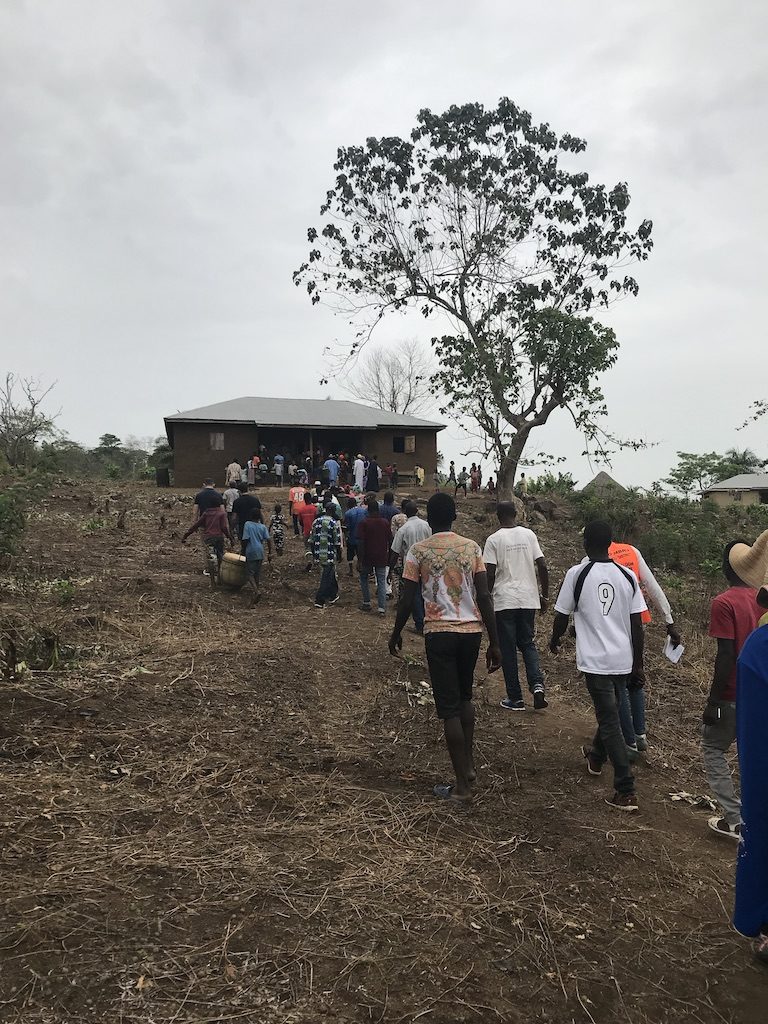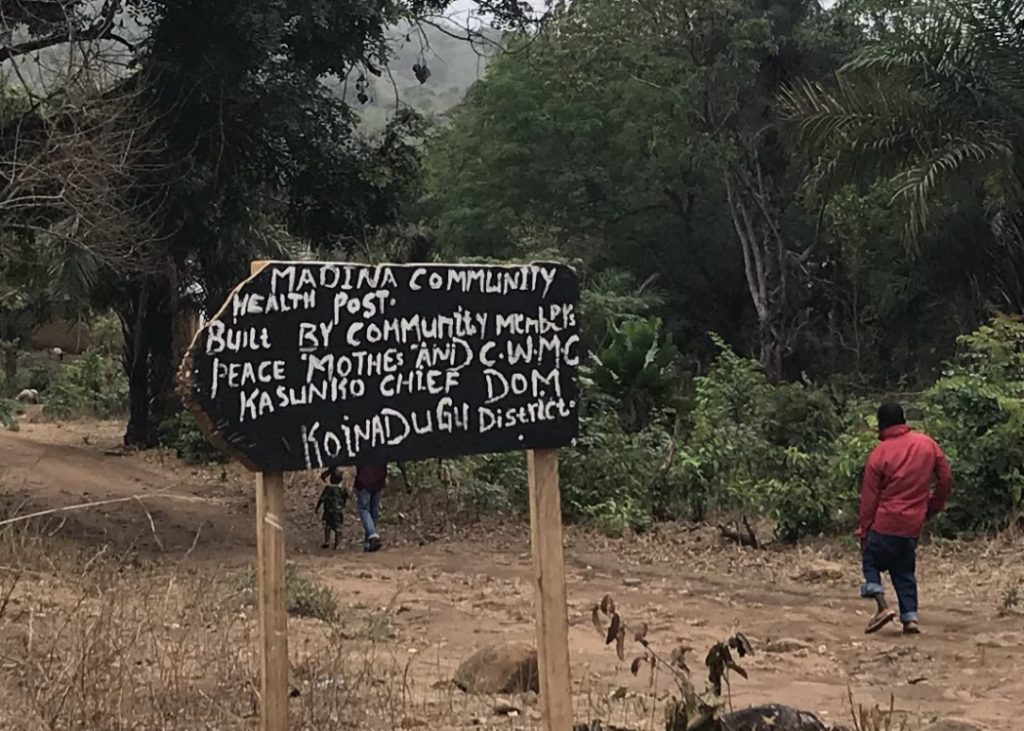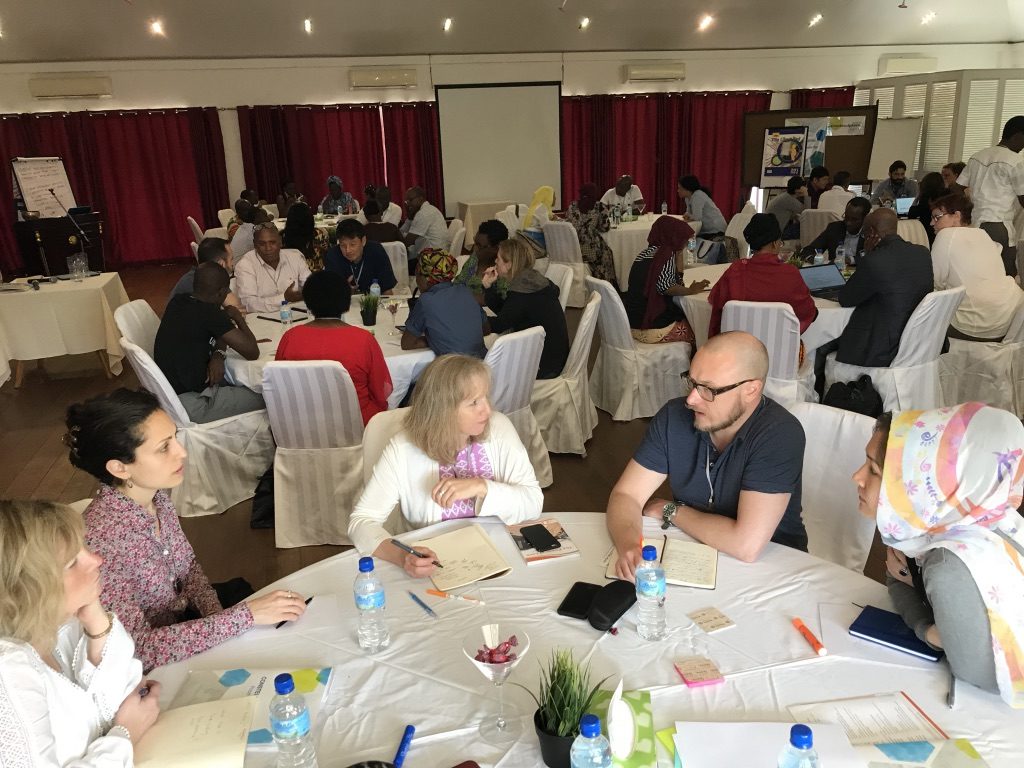The learning experience for Constellating Peace participants was especially deepened by the midweek visits to the communities that had engaged in the People’s Planning Process. It took several hours of driving to reach the different communities, and the group went to a variety of locations, to be able to witness different dimensions of the program in action.


The visits to the villages gave the participants a direct experience of the sense of unity and personal motivation and commitment of the people. Back at Tokeh Beach, we met up in small groups to share stories of what we had experienced and then reflected as a group. A participant commented how impressed she was with how self-reliant and resourceful the people of Sierra Leone are. She compared that to her country where people are more apt to wait for outside help or not take initiative.

Libby explained that was a challenge in Sierra Leone too, a result of an educated ‘NGO culture’ that was the norm in communities before the Fambul Tok work began. The “inside out peace” process was instrumental in generating that shift in perspective. Building communities’ awareness of their capacity took a lot of work from Fambul Tok. The process and intention of the work was to cultivate a sense of self-confidence and self-sustenance in people at every level.
Libby said “It takes a mind set shift for people to realize they have lots of resources within them that they can use – without requiring or waiting on external resources.” The People’s Planning Process is about seeing the assets of a community, not focusing on the deficits. It focuses on what is strong not what is wrong, as one of the Constellating Peace participants noted. People are encouraged to look at what they have rather than what they need or is missing. In contrast, much of the donor and development community works in practice in ways that are deficit-based – which gets perpetuated when organizations approach a community and a situation through a frame of solving problems.
The “inside out peace” process represents a different way of working as an outsider (e.g., funder, NGO, expert, government representative.) Referring to the stories of what people saw in the villages, Libby highlighted three key outsider roles:
- Go to Them – Fambul Tok makes a point to travel to the villages and to the farms. “Going to” is a journey. Libby remarked that “you had to go to the communities to learn what you learned.”
- Seeing the Resources – She said “What you look for is what you see. We work in a way where we see the potential in a person and community and mobilize and grow it. Every time Fambul Tok comes to a village, they go in seeing those resources and reinforcing that they are not here to give me them resources, they are there to help them see the ones they have.”
- Invite Out – Invite Forward – Fambul Tok helps create space for repairing the cup of the community. The goal is to bring people together in a way where it invites that potential forward into action. The activity of doing projects is a way to “express the resources they have.”
The invitation of this learning gathering was to learn from the villagers – who have endured civil war and Ebola, and found their way to an embodied understanding and willingness to work together with the resources they have.

